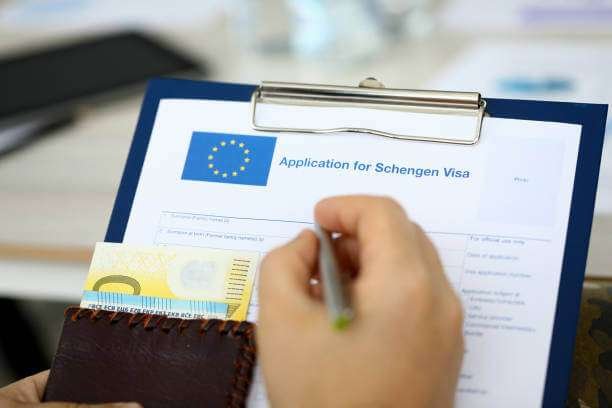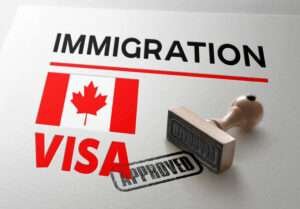If you dream of exploring Europe, understanding the Schengen Visa is crucial. This detailed guide will walk you through everything you need to know about obtaining a Schengen Visa, ensuring you have all the information required for a successful application.
What is a Schengen Visa?
The Schengen Visa allows travel within 27 European countries without border controls. These countries are part of the Schengen Agreement, which facilitates free and unrestricted movement. The Schengen Area includes popular destinations such as France, Germany, Italy, and Spain, among others.
Types of Schengen Visas
- Uniform Schengen Visa (USV):
- Category A (Airport Transit Visa): For airport layovers without leaving the international transit area.
- Category C (Short-stay Visa): For tourism, business, or family visits up to 90 days within a 180-day period.
- Limited Territorial Validity Visa (LTV):
- Valid only in specific Schengen countries indicated in the visa.
- National Visa (Category D):
- For long-term stays over 90 days, such as work or study visas.
Schengen Visa Requirements
- Application Form: Fully completed and signed.
- Passport: Valid for at least three months beyond the return date, with two blank pages.
- Photos: Two recent passport-sized photos.
- Travel Itinerary: Detailed travel plans, including flight and accommodation bookings.
- Travel Insurance: Coverage of at least €30,000 for medical emergencies.
- Proof of Accommodation: Hotel bookings or an invitation letter if staying with someone.
- Proof of Financial Means: Bank statements or a sponsorship letter.
- Employment Status:
- Employed: Employment contract, leave letter, and bank statements.
- Self-employed: Business license, company bank statements, and tax returns.
- Student: Proof of enrollment and a no-objection letter from the school.
- Retired: Pension statements.
Application Process
- Determine the Type of Visa Needed: Based on your purpose of visit.
- Find the Right Consulate/Embassy: Based on your main destination or longest stay.
- Schedule an Appointment: Book a slot at the consulate/embassy.
- Prepare the Documents: Gather and organize all required documents.
- Attend the Interview: Be on time and answer questions truthfully.
- Pay the Visa Fee: Usually around €80 for adults and €40 for children.
- Wait for Processing: This can take up to 15 days but may vary.
Tips for a Successful Application
- Be Thorough: Double-check all documents.
- Be Honest: Provide truthful and accurate information.
- Apply Early: At least 15 days before your planned travel date.
- Stay Informed: Keep up-to-date with any changes in visa policies.
Detailed Breakdown of Visa Types
Uniform Schengen Visa (USV)
Category A (Airport Transit Visa): This visa is for travelers who need to transit through the international zone of a Schengen airport without entering the Schengen Area. It is mandatory for citizens from certain countries who have a layover in a Schengen country.
Category C (Short-stay Visa): This visa is the most common and allows travelers to stay in the Schengen Area for up to 90 days within a 180-day period. It can be issued for single, double, or multiple entries.
Single Entry Visa: Allows one entry into the Schengen Area. Once you leave, you cannot return on the same visa.
Double Entry Visa: Allows two entries into the Schengen Area. After the second exit, you cannot return.
Multiple Entry Visa: Allows multiple entries and exits during the validity period of the visa.
Limited Territorial Validity Visa (LTV)
The LTV visa allows the holder to travel only within the specific Schengen states that are mentioned on the visa sticker. This visa is issued in exceptional cases, such as for humanitarian reasons.
National Visa (Category D)
This visa is for those who intend to study, work, or live in one of the Schengen countries for more than 90 days. It is often issued for long-term stays like work or study and usually leads to a residence permit.
Required Documents Explained
- Application Form:
- The application form can be found on the website of the consulate/embassy you are applying through. Make sure to fill it out completely and accurately.
- Passport:
- Ensure your passport is valid for at least three months beyond your intended stay. It should have at least two blank pages for visa stamps.
- Photos:
- The photos should meet the specific requirements set by the Schengen countries, such as size (35×45 mm), background color, and quality.
- Travel Itinerary:
- Include flight reservations, hotel bookings, and a day-to-day travel plan. This demonstrates your intention to leave the Schengen Area before your visa expires.
- Travel Insurance:
- Purchase insurance that covers medical emergencies, hospital care, and repatriation for a minimum of €30,000. The insurance must be valid in all Schengen countries.
- Proof of Accommodation:
- Provide hotel booking confirmations or an invitation letter from a host. If staying with family or friends, the invitation letter should include details about your stay.
- Proof of Financial Means:
- Show you have sufficient funds to support yourself during your stay. This can be through bank statements, pay slips, or a sponsorship letter.
- Employment Status:
- Employed applicants should provide an employment contract, recent pay slips, and a leave approval letter from their employer.
- Self-employed individuals should submit business registration documents, company bank statements, and tax returns.
- Students need a proof of enrollment and a no-objection letter from their educational institution.
- Retired individuals should provide proof of their pension or other financial support.
The Interview Process
During the visa interview, you will be asked questions about your travel plans, financial situation, and reasons for visiting the Schengen Area. Be prepared to answer honestly and confidently. The consular officer will verify the authenticity of your documents and assess your intention to return to your home country.
Common Challenges and How to Overcome Them
- Incomplete Documentation:
- Ensure you have all the required documents and that they are in the correct format.
- Financial Insufficiency:
- If your bank statements do not show sufficient funds, consider providing additional financial guarantees or a sponsorship letter.
- Travel Insurance Issues:
- Purchase insurance from a reliable provider that meets Schengen requirements.
- Lack of Travel Itinerary:
- Plan your trip in detail and provide a comprehensive itinerary.
- Misleading Information:
- Be truthful in your application and during the interview. Any inconsistencies can lead to visa denial.
What to Do If Your Visa is Denied
If your Schengen Visa application is denied, you will receive a letter explaining the reasons for the denial. Common reasons include insufficient documentation, lack of proof of financial means, or doubts about your intention to return to your home country.
You have the right to appeal the decision. The appeal process varies by country, but generally, you will need to submit a written appeal to the consulate/embassy that denied your visa, addressing the reasons for the denial and providing any additional supporting documents.
Useful Resources and Links
Conclusion
Applying for a Schengen Visa might seem daunting, but with proper preparation, it can be a smooth process. This comprehensive guide provides all the essential details to help you navigate the application process confidently. Start planning your European adventure today!
For more information and updates about Migrantion-related things, Stay tuned with Migrants Guide, . Safe travels!
Keywords
- Schengen Visa
- Europe travel visa
- Schengen Visa application
- Schengen Visa requirements
- Schengen Visa process
- Schengen Visa tips
- Migrants Guide
By following this comprehensive guide, you will be well-prepared to apply for a Schengen Visa and embark on your European journey. Happy travels!



